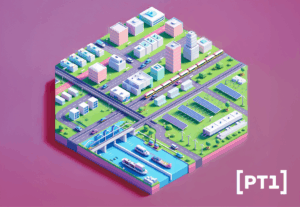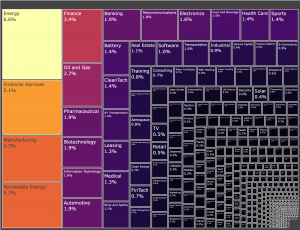
Europe’s InfraTech Moment
Europe faces a €6 trillion infrastructure transformation over the next decade—the largest since post-war reconstruction. The convergence of aging infrastructure, €2+ trillion in committed public funding, and mature AI/robotics technology creates an unprecedented opportunity for InfraTech companies to emerge as the next generation of industrial champions. Private capital is already flowing, with companies like Hometree and Terra One proving that venture-backed startups can build and scale essential infrastructure. With its unique LP base of European industrial leaders and deep infrastructure expertise, PT1 is positioned to back the bold founders who will define this new era.

Positionspapier: 5 for ‘25 – Grundlagen & Maßnahmen zur Sicherung der innovativen Wirtschaft in Deutschland
Deutschland steht zwangsläufig vor grundlegenden Transformationsprozessen: Fortschreitender Klimawandel, die notwendige Energiewende, geopolitische Risiken, der demographische Wandel und das schleichende Erodieren der globalen Wettbewerbsfähigkeit bei gleichzeitig knappen Staatskassen erfordern beherztes Handeln im Schulterschluss privater und staatlicher Kräfte. Nur so kann die Wirtschaftskraft Deutschlands und damit auch die Basis unseres gesellschaftlichen Wohlstandes und Friedens in den kommenden Dekaden erhalten bleiben oder ausgebaut werden.

Launch of the “Think & Do Tank Initiative” by PT1, Future Energy Ventures & BVES
The venture capital investors PT1 and Future Energy Ventures are joining forces with the German Energy Storage Systems Association BVES for a ‘Think & Do Tank on Battery Energy Storage Systems’. The initiative kicked-off at the beginning of September with a roundtable on the topic of ‘Grid Level Battery Energy Storage Systems – Status Quo Germany’.

EPDs: as easy as 1, 2, 3?
Construction data is hard, and not as simple as do-re-mi (last Jackson 5 reference I promise). Sites and projects are complex, prone to going over budget and creeping out of scope. This makes it hard to understand which materials have gone into a building and where they came from. But why does this matter?

The European Built World Funding Report
We see a lot of deals at PT1, across different sectors, stages, and countries. Often, we’d sit and go through our data, trying to find trends and stories to tell. Occasionally, we’d go through other databases as well, and see how the market was doing. These were always internal exercises, designed to help us reflect and take stock of what was going on.
This time, we’re doing something differently. We’ve analysed every single transaction that took place in Europe from September 23 and February 24 (data from Crunchbase). Here, in our first public report, we can share the results.

The Plattenbauten Legacy: Decarbonising Multi-family Buildings
Real estate is carbon-intensive. Operating and constructing buildings makes up 40% of the EU’s energy consumption – and the majority is from operations. All realistic net-zero pathways have decarbonising buildings as a central part. But we’re behind target. The residential retrofit rate in Germany has hovered at 1% of housing stock for the last few years. At this rate it will take over a century to decarbonise residential buildings alone (way beyond our targets).




